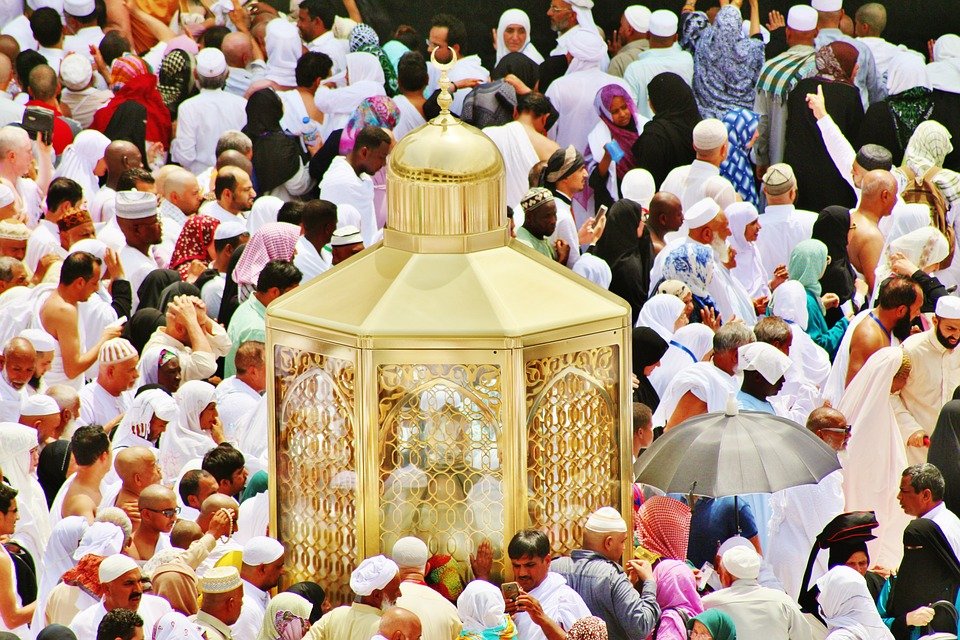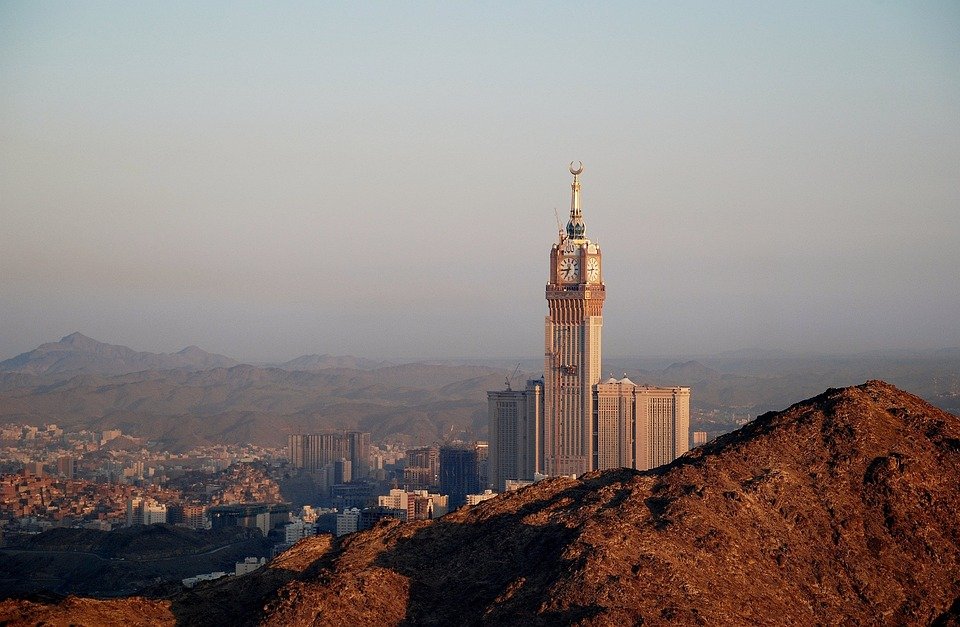You are here to read: When Was the Hajj First Started? Explore Its Historic Origins – A Thoughtfully Written Guide Offering Spiritual Wisdom and Travel Advice for Every Pilgrim who is going on holy journey of Hajj or Umrah.
When was the Hajj first started? This question holds great significance for millions of Muslims worldwide. I believe exploring the origins of this sacred pilgrimage reveals not just a historical event, but a profound expression of faith. In this article, I promise to guide you through the roots of Hajj, shedding light on its inception and the traditions that have been upheld for centuries. As we move forward, you’ll find valuable insights about when the Hajj began and how it continues to shape Muslim lives today.
Understanding when the Hajj first started helps us appreciate its importance in the Islamic faith. I feel that anchoring our beliefs in history enriches our spirituality. This pilgrimage is deeply woven into the religious fabric, reflecting unity, devotion, and submission to God. With nearly a decade of expertise, our team at Airlinkhajjandumrah.com is dedicated to providing you with accurate information on “When Was the Hajj First Started? Explore Its Historic Origins.” Our years of experience in Umrah and travel to Makkah and Madinah since 2016 empower us to guide you through this cherished tradition. Together, let’s explore this sacred event that means so much to so many.
When Was the Hajj First Started? Explore Its Historic Origins
A Sacred Tradition
Hajj is a remarkable pilgrimage that draws millions of Muslims from across the globe each year. It holds a deep spiritual significance, acting as a time for reflection, prayer, and unity among believers. The origins of Hajj trace back centuries, intertwined with history, faith, and culture. I often find myself fascinated by how such a profound tradition has evolved, reaching people from all walks of life.
This pilgrimage is not just an annual event; it embodies a rich tapestry of experiences. Each year, countless souls gather in Makkah, sharing their hopes, dreams, and prayers. The essence of Hajj is rooted in a quest for peace and forgiveness. As individuals walk the same paths that many have traversed before them, they partake in a sacred ritual that has persisted through time.
Historical Context
The history of Hajj stretches back to the time of the Prophet Ibrahim, also known as Abraham. In my opinion, this connection adds a layer of significance, linking the pilgrimage to a biblical figure revered in multiple faiths. According to Islamic tradition, Ibrahim was commanded by God to leave his wife Hagar and their son Isma’il in the desert of Makkah.
As the story unfolds, Hagar desperately searched for water. Her faith led her to run between the hills of Safa and Marwah. Eventually, a miraculous spring called Zamzam appeared, providing sustenance for Isma’il. This moment is pivotal. It symbolizes resilience, trust, and devotion. I think we can all relate to facing challenges and finding courage within ourselves, much like Hagar did.
The Prophet Muhammad’s Role
Fast forward to the 7th century, the Prophet Muhammad played a crucial role in shaping Hajj as we know it today. During his life, he performed the pilgrimage himself, setting an example for all future generations. Certain rituals were established based on his practices, turning Hajj into a structured form of worship.
You're at the middle of this awesome post at AirlinkHajjandUmrah.com through: When Was the Hajj First Started? Explore Its Historic Origins. Keep reading, it gets better!
For many Muslims, this serves as a profound guiding light. By following in the footsteps of the Prophet, they connect to a larger community of believers. I feel that these shared experiences strengthen the bond among participants. It’s an opportunity for individual reflection while embracing a collective spirit.
Rituals and Their Significance
Hajj is rich with rituals, each carrying its own unique meaning. The Tawaf, for example, involves circling the Kaaba, the sacred cube-shaped building in Makkah. This act symbolizes unity as pilgrims walk together, demonstrating the idea that everyone is equal in the eyes of God. It’s fascinating to witness how this simple act can foster such deep emotions.
Another significant ritual is standing at Arafat, a day of intense prayer and supplication. Pilgrims gather on the plains, reflecting on their lives, seeking forgiveness. This moment is often described as the pinnacle of Hajj. I think this gathering epitomizes the essence of humility and self-awareness, encouraging individuals to contemplate their life paths and choices.
Global Impact of Hajj
Over the years, Hajj has transcended cultural boundaries. It brings people together from various backgrounds, creating an atmosphere of unity and harmony. Pilgrims arrive in Makkah from distant lands, each bringing their unique stories, traditions, and experiences. This melting pot of cultures enriches the overall experience and broadens horizons.
The impact of Hajj extends beyond the individual. Cities surrounding Makkah benefit from the influx of visitors, enhancing their economies and creating jobs. As I observe this phenomenon, it’s incredible to see how such a spiritual event can have tangible effects on communities.
Celebrating Traditions
Hajj isn’t just a set of rituals; it’s a celebration of faith, history, and culture. Various traditions have emerged over the years, adding vibrancy to the experience. Many families consider it a rite of passage for their children. Some even prepare for years, ensuring they are spiritually and financially ready for this significant undertaking.
I believe this preparation brings families closer together. They share stories, lessons, and expectations, enriching their understanding of the pilgrimage. This tradition serves as a bridge for many to connect with their heritage while creating lasting memories.
The Future of Hajj
As we look to the future, the significance of Hajj remains as vital as ever. With advancements in technology and travel, the pilgrimage continues to evolve. However, the core values of faith, unity, and reflection remain steadfast. Hajj encourages us to look inward while connecting with a global community.
In my opinion, this pilgrimage serves as a beacon of hope for many. It reminds us that no matter our backgrounds, we can share profound experiences. As the world changes, this sacred tradition provides a reassuring continuity, inviting us all to be part of something greater than ourselves.
Through understanding the historic origins of Hajj, we can appreciate how it connects us in myriad ways, transcending time and place. It invites all of us to reflect on our own journeys while fostering connections that enrich our understanding of humanity.
That wraps up When Was the Hajj First Started? Explore Its Historic Origins. Thanks for sticking with us till here! Share this: When Was the Hajj First Started? Explore Its Historic Origins with your friends.
Check our homepage at Air Link Hajj & Umrah for more awesome updates.
Some interesting posts are: 1: Umrah Mubarak, 2: When is Umrah closed 2026?, 3: When does Umrah start after Hajj 2026?
Mushu, an experienced Saudi Arabia traveler and writer, shares insightful tips and spiritual reflections to enhance Hajj and Umrah journeys for fellow pilgrims. He has been to Makkah and Madina from 2016 to 2023 many times and his posts will reflect this.






